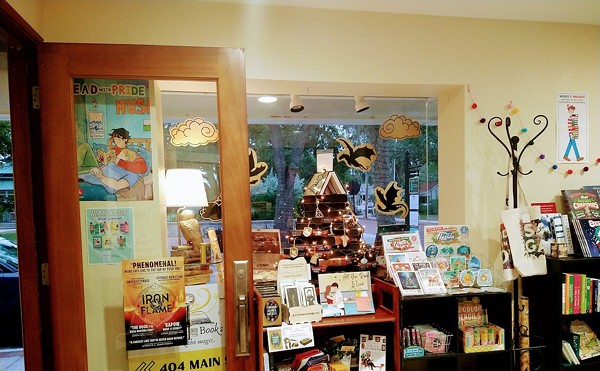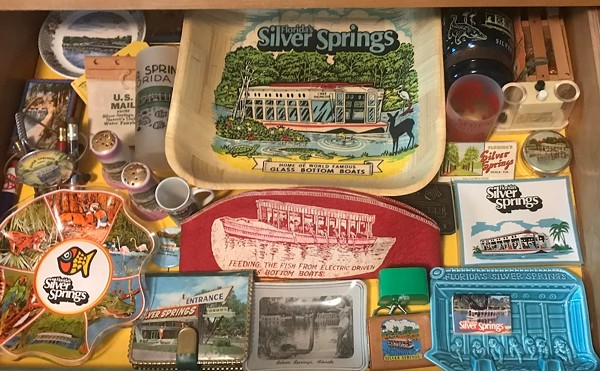
Artist Philip Pearlstein had his first brush with fame early on. After a high school art teacher encouraged him to enter a Scholastic magazine contest, his first ever oil painting — a 14-by-18-inch picture of a merry-go-round painted in 1940 — was exhibited in museums and reproduced in vivid color in Life magazine.
His budding reputation was such that when Pearlstein returned to his native Pittsburgh after a three-year stint in the U.S. Army and enrolled in Carnegie Tech (now Carnegie Mellon University) to study art, his classmate Andy Warhola wanted to know what it had been like to experience such success.
“He asked me, ‘How is it to be famous? How does it feel?’” Pearlstein recalls. “And I said, well, it only lasted five minutes. Of course, later he took that and ran with it, increased it. To 15.”
Now nearly 90, Pearlstein has endured more than 15 minutes of fame during his 75-year career. He never rocketed to the household name status of his college classmate (who became a close friend) — while Warhol was throwing parties at the Factory 20 years later, Pearlstein was teaching and spending time with his wife and kids. But a steady accumulation of artistic achievements has propelled him to the status of living legend.
Through June, the Museum of Fine Arts in St. Petersburg celebrates Pearlstein’s longevity and his prodigious skill with a retrospective exhibition that spans the gamut, literally, from “Merry-Go-Round” — that diminutive but dynamic little canvas from 1940 — to works completed as recently as 2011, well into the artist’s eighth decade. Most importantly, it includes more than a dozen of Pearlstein’s monumental paintings of nude figures, peculiarly posed and often arranged amid puzzling conglomerations of objects, the enigmatic images for which he is best known. Featuring 62 paintings and prints in all, the exhibition was organized specifically for the MFA by Patterson Sims, a New York-based curator who has known Pearlstein for more than 30 years.
For an artist whose name is synonymous today with a certain style of representing the human figure — unromanticized, desexualized, and frankly accompanied by an air of boredom — Pearlstein offers a surprisingly light-hearted explanation for why he adopted his distinctive realist approach after an early interest in the sturm und drang of Abstract Expressionism.
“I had no reason to be an expressionist anymore,” Pearlstein says. “I liked my life.”
By the 1950s, Pearlstein had moved to New York — where he shared an apartment for a year with Warhol at the request of the younger artist’s family — married and begun teaching at the Pratt Institute, Yale University and Brooklyn College. Though he briefly joined the group of second-generation Abstract Expressionists who were following in the larger-than-life footsteps of Pollock and Rothko, he abandoned that form after becoming fascinated through teaching by the basic “problem” of representing the human figure.
“I got caught up in that problem, and suddenly it seemed to me to be a much more interesting problem than what I was doing as an expressionist,” Pearlstein says.
Since the 1960s, he has painted the people, places and things of the exhibition’s title using roughly the same process. Three days a week, models arrive at his Midtown Manhattan studio in the morning and sit for a whole day of painting punctuated by frequent breaks and a long lunch (during which the models, who are often young artists, apprise Pearlstein of the latest goings-on in New York’s contemporary art scene). The models pose themselves as they like — Pearlstein calls them his collaborators — and often bring or help select the objects they are posed with. Completion of a painting can take months; only in the case of one portrait has Pearlstein ever painted someone from a photograph.
The exhibit features a deeply satisfying range of nudes. “Reclining Male and Female Nudes on Red and Black Drapes” (1966) depicts a man and woman positioned close enough together to be lovers, but for (or perhaps in spite of) the emotional distance implied by their postures of self-containment. A series of paintings of Kilolo Kumanyika, a model who sat for Pearlstein from 1996 to 2012, shows her arranged alone and stoically on an inflatable lounge chair, and with props including a wooden mannequin and a toy train.
While there is something languidly sensual about the figures, Pearlstein’s subtle and not-so-subtle violations of art historical conventions for representing the human body — eschewing idealizing poses, declining to depict canonical forms of emotion, even cutting off heads to create unusual compositions — render the nude surprising, arresting and engrossing. The paintings make no pretense of illusion, but they are uncannily real.
The exhibition also has a gallery devoted to Pearlstein’s portraits. Art nerds will thrill to recognize Chuck Close and Rackstraw Downes along with the lesser-known (and now deceased) sculptor and performance artist Scott Burton and art historians Linda Nochlin and Irving Sandler; there's also an image of Henry Kissinger that appeared on the cover of Time. (A portrait of Warhol that belongs to the Whitney Museum is on display separately in a gallery of early work.) Another gallery is devoted to Pearlstein’s New York cityscapes and other landscapes made in Italy, Israel, Egypt and Cambodia.
Putting all three facets of Pearlstein’s practice on par with each other was a major objective for curator Patterson Sims, who previously organized a Pearlstein retrospective at the Montclair Art Museum in New Jersey. The MFA exhibition takes advantage of the plenitude of Pearlstein works in Florida-based collections, among them the cool-toned “Female Model on Ladder” (1976), on loan from the Ringling Museum of Art, and several prints made at USF Graphicstudio including a large-scale woodcut of the landscape surrounding Jerusalem.
While Pearlstein’s places and faces look great receiving their share of the spotlight, they’re unlikely to usurp his contribution to understanding the human figure.
“He took a very tried, true, trite convention of art, and gave it his own point of view,” Sims says.















